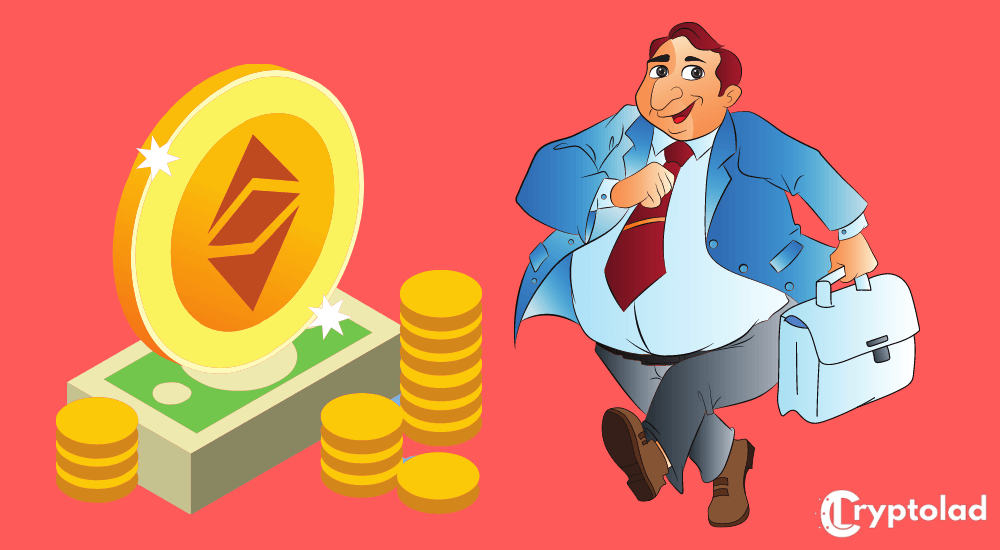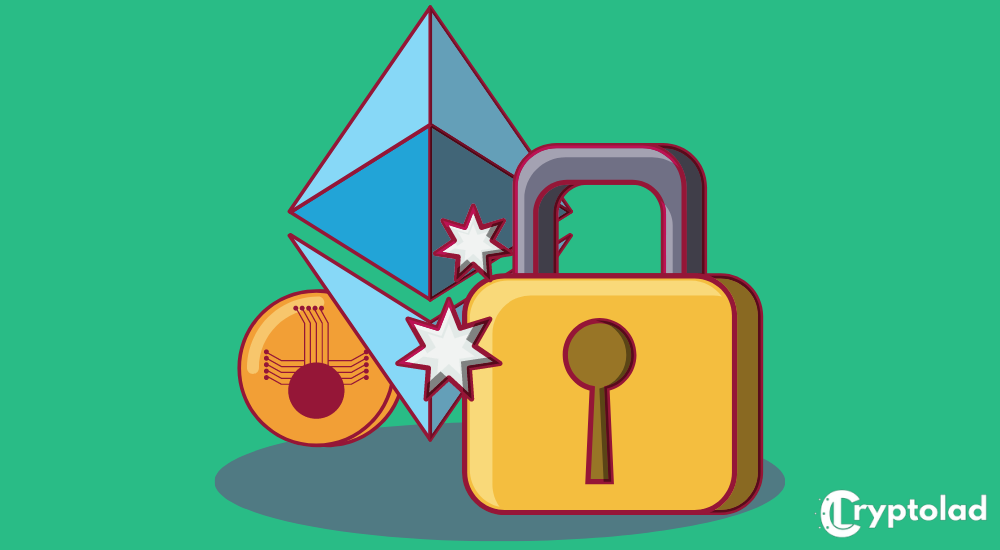Will Proof-of-Stake Kill Ethereum Mining?
What does Ethereum's POS consensus mean for miners?
September 3 2021

The Ethereum blockchain is moving to the new proof of stake consensus.
So will the POS kill ethereum mining?
Let me explain...
In the current proof of work consensus, all miners must solve a complicated question, and the quantity and quality of their hardware will typically determine the winner.
However, when it comes to the proof of stake, the winner is selected randomly on the amount you have staked. That means that Ethereum will no longer be mineable.
Don't let that stop you! If you still want to be a cryptocurrency miner, check out our list of the 12 Easiest Cryptocurrencies to Mine in 2021.
Will Proof-of-Stake Kill Ethereum Mining?
If or when the POS consensus is implemented, it could cause severe financial damage to large mining investors.
Even though you can design your GPUs for mining other cryptocurrencies and regain the machine's cost by resale, this device typically depreciates over time.
Therefore, if you frequently use your device for intense mining activities, you might not regain the GPU machine's original value.
POW Vs. POS: Key Differences
With the new POS consensus comes big changes, but what exactly are they?

Here are the main differences between proof-of-work and proof-of-stake
• Proof of Stake is All About Capital
In this new consensus, an individual's ability to validate a block transaction will be relative to the amount of money you've invested in staking.
To be more specific, staking suggests that you will have to place your funds in a locked network and receive an ROI for your service.

That said, the larger your stake, the more the power. The reward system in this new blockchain system will depend highly on the stake that you have.
That means the more ETH you have staked, the more power you will get. Unfortunately, that also means the richer you are, the richer you will get.
• POS Will Perform Better than its Predecessor
The implementation of the ETH 2.0 is said to bring superior performance when compared to the proof of work systems.
That's because the new partitioning system will enable faster throughput compared to the proof of work.

The new POS splits the Ethereum blockchain into small shards that will generally improve the number of transactions per second. That means the Ethereum network will be way ahead of its competitors.
• Security Systems
Supposedly, the POS network will be vulnerable to long-range attacks. The long-range attacks only exist because of weak subjectivity.
The computation in the proof of work secured the blockchain from any hack attacks. That's not the case in the proof of stake, which could lead to potential losses.

However, it's easier said than done. To effectively launch an attack on the proof of stake consensus, the hacker will have to evade security measures that prevent 51% of the attacks without alerting any system.
These systems make it virtually impossible for an attacker to breach the securities in place without losing all of their ETH in the process.
•Chances of Centralization
The more funds you are staking, the more rewards you are likely to get. However, the flaw about this system is that the majority of rewards will be awarded to the wealthier contributors, which leads to a snowballing effect.

More importantly, that also threatens the decentralization of the Ethereum blockchain.
That's because this system will only give more power to the already wealthy contributors in the network.
Thankfully, anyone can become a validator in this network since you don't need any hardware to contribute.
Therefore, most enthusiasts will argue that since the bar of entry is set relatively low, the blockchain will still maintain its decentralized nature.
Now that we've got POS out of the way, Ethereum is still mineable. So how do you mine Ethereum?
Let's have a look...
Ethereum Mining Guide (2021)
First of all, where does Ether come from, and where does the mining take place?
Ethereum mining is a cornerstone of the entire Ethereum network. The miners spend computing power and time solving complex mathematical problems, providing the so-called proof-of-work to the network.
Everyone has an equal opportunity to solve complex mathematical problems and claim the rewards. At the same time, that helps to verify the Ethereum transactions.
Ethereum mining is similar to mining Bitcoin. However, you will need a few items before you get started.
- GPUs machine
- Computer
- Ethereum Wallet
- Ethereum Mining pool
Essentially, there are three ways in which you can mine Ethereum. That includes;
- Pool Mining
- Mining alone
- Cloud Mining
•Pool Mining
Pool mining on Ethereum is the fastest and easiest way to get started as a miner.
That's because, in the pool, you get to work alongside other people. In simpler terms, several people are mining in a single pool. And if one of the pool members gets the secret number to solve a transaction, they share their reward with everyone in the pool.

However, your pool size determines how often you will find the blocks and share your rewards. But you must understand that all pools are not the same.
Therefore, there are certain factors you need to consider before you join a pool. That includes; the minimum payout, the pool fee, and pool size.
It's essential to check the pool size when it comes to Ethereum mining, as the more miners there are, the more the chance of getting a reward.
But at the same time, the more people joining a pool, the more you will have to share the reward among many people.
•Mining Alone
The idea of mining alone seems so inviting for most people. Just think about it, you don't have to share your rewards with anyone.

That would be great, right? You turn on your computer and let the money roll in. Well, I'm sorry to disappoint you; you're wrong!
When it comes to Ethereum mining, you are competing with other people. That means you will only get the rewards if you are the first to solve the mathematical problem.
When miming alone, you will be competing with a network or large organizations that probably have more resources than you do.
Therefore, you need to be very lucky to get the puzzles right as the first person. What's more, there is so much you need to worry about when mining alone, from heating problems to electricity costs and space.
•Cloud Mining
Cloud mining essentially requires you to pay someone else to do the mining for you. You just rent mining time from other people, and in return, they give you all the rewards they get.

This might come with a few advantages, in that you are not responsible for the equipment. When you get someone to mine for you, it's like you are paying for their workload.
Therefore, you are not concerned with any repair costs or electricity.
But some companies may make you cater to these costs, so make sure you read the terms carefully. All in all, there are lots of challenges that come with Cloud mining.
For instance, when the price of Ethereum drops, there is no way you will get the money back. You are now just stuck with all the mining workload you got someone to do for you.
How are Ethereum Transactions Mined?
In a nutshell, miners are rewarded with a new block when they solve a complex problem.
Once that's done, the miner can now transfer the new coin to their wallet. However, the mining process is quite challenging, and that's why you will need a mining pool.
This type of mining process is known as Proof of Work Consensus (Remember this since it will help you understand how the Proof of Stake affects the Ethereum blockchain).
Compared to bitcoin mining, Ethereum miners receive two ETHS plus transaction fees, also known as gas.
What's more, the Ethereum algorithm utilizes Ethash, which is slightly different from the bitcoin hashcash. The Ethash is compatible with the ASICs that are designed for bitcoin mining.
Additionally, it's not hard to sell Ethereum that's earned through mining.
All you need is a suitable cryptocurrency exchange, and voila! You can exchange your Ethereum for fiat currency or another cryptocurrency of your choice.
Is Ethereum Mining Still Worth it?
If you haven't started mining Ethereum, then it's best to avoid starting. It's still profitable. However, the uncertainty of the Ethereum consensus could lead to substantial losses on your part.
On the contrary, with a powerful tool, and if the hash rate remains the same throughout your mining process, you can earn one ETH within six months. That's ridiculously fast in the cryptocurrency mining industry.
Thankfully, there are other cryptocurrencies that you could mine, including bitcoin.
That said, if you still want to be a cryptocurrency miner, check out our list of the 12 Easiest Cryptocurrencies to Mine in 2021.

